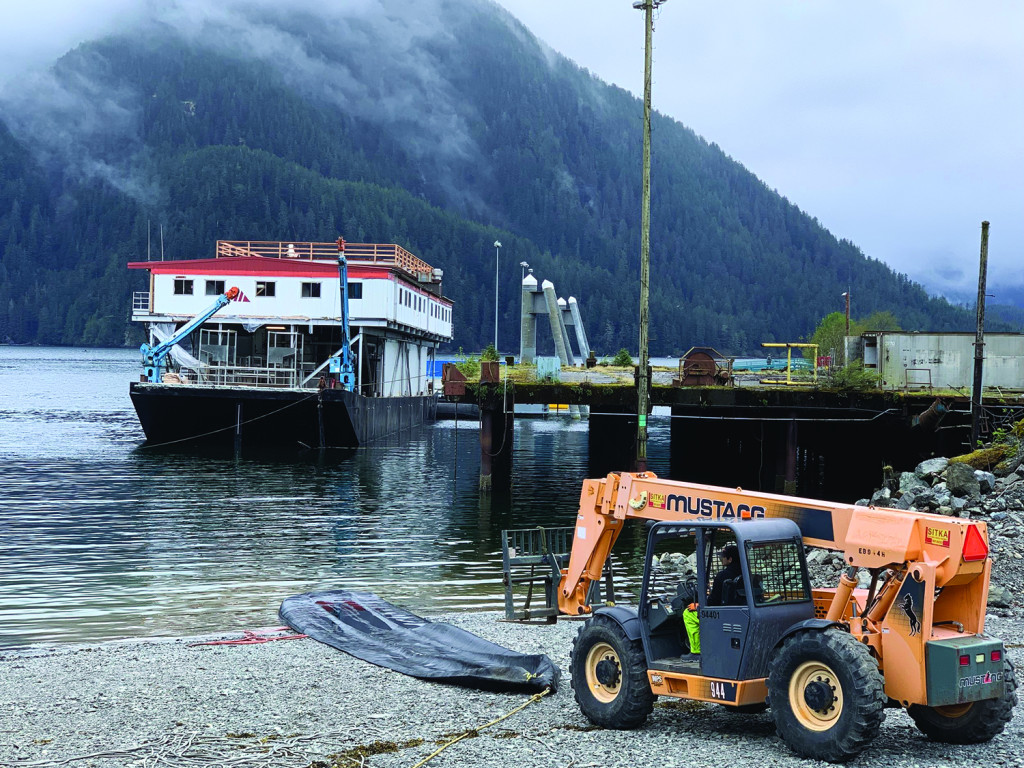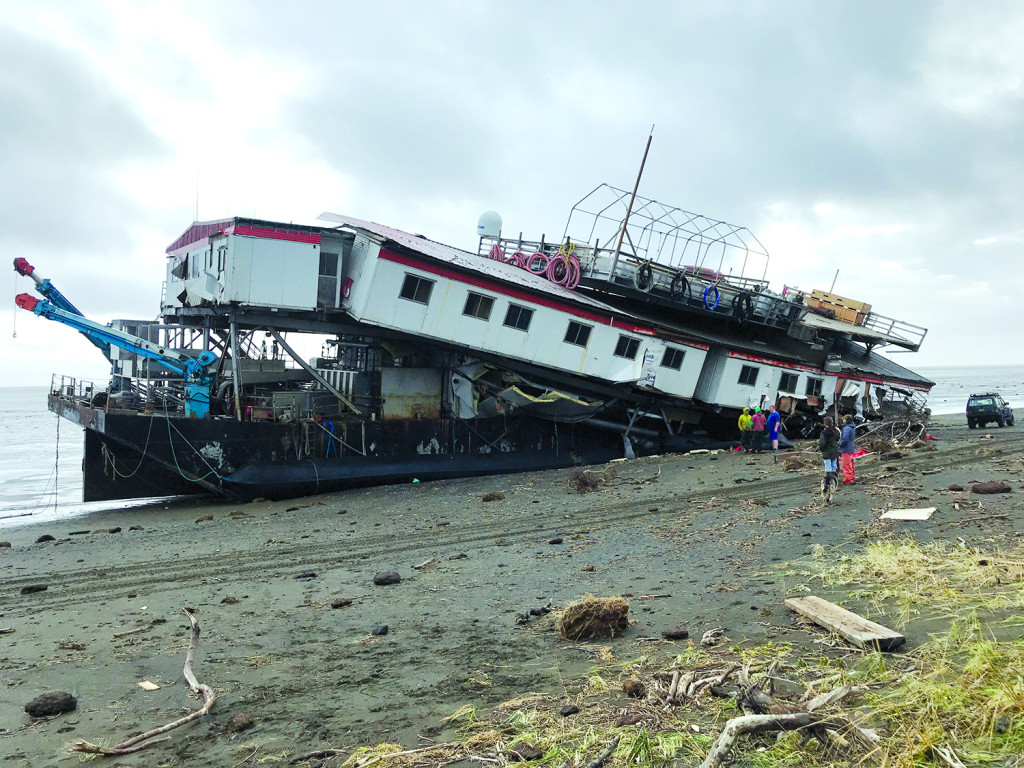A late summer storm dealt a tough blow to Northline Seafoods, a Bristol Bay upstart trying to revolutionize the way fish are processed in the world’s largest sockeye salmon fishery.
On the night of Aug. 30, gusts up to 80 miles per hour tore across the Nushagak River and snapped the anchor line on a barge belonging to Northline. The six people onboard attempted to set backup anchors, but winds snapped those, as well. The gale pushed the vessel onto the beach not far from the fishing village of Ekuk, where a person familiar with the incident said the boat “mashed for six hours” on the flats.
The crew escaped unscathed after an undoubtedly harrowing experience, but the barge did not: The top unit on the $7 million vessel had crumpled onto the deck.
Northline president and CEO Pat Glaab told local radio station KDLG that the hull went undamaged, and he expects the processor to be ready to roll next season. It is safe to say the fishery will be pulling for them.
Glaab and his partner, Ben Blakey, dreamed up Northline several years ago as a way to freeze fish quicker and turn out the freshest fillets possible. Before starting Northline, Glaab built 10 onshore processing facilities around Alaska, including the Leader Creek facility in Bristol Bay’s Naknek, and knows things could be done better.
“I’ve spent my entire working life in the fisheries, and I’ve seen this huge gaping hole in how this fishery operates versus how it could operate. It’s like going to a country that doesn’t have cell phones and being like, ‘Gee, you guys would be much better off if you had cell phones,’” Glaab told NF last year.
No one denies that Bristol Bay has made massive quality strides over the past couple decades. Most of the boats have RSW units, and fishermen are more tuned in to proper handling; many are bleeding now and most have cushioned deck mats. Very little of the sockeye coming out of the bay goes to cans anymore, with most destined for higher value fillets.
But despite these changes, Glaab said the fishery has yet to eradicate the vestiges of the old ways.
“The current system is what developed organically when we were just stuffing everything in a can and had no other options. It’s a holdover from those systems. It was just cheap protein before. You were just harvesting to feed World War II, or the Depression-era,” he said.

And even improvements like RSW are flawed, Glaab said. Big sets, common in the bay, can overpower RSW systems, heating refrigerated water and prolonging the cooling of fish. Northline uses slush ice instead, and both Glaab and Blakey are fervent about its advantages.
“It’s a complete fallacy that RSW is even as close to as good as ice. There’s no comparison,” Glaab said.
Blakey — a third-generation fisherman whose dad ran the Snopac processor in Bristol Bay — pointed out that Alaska’s highest value fish, like those coming out of the Copper River, are iced at catch.
Tenders pose a problem, too, according to the Northline executives. After fish sit in the holds of gillnetters for up to eight hours, they are delivered to tenders, where Glaab says large numbers of sockeye in huge holds can stall the cooling of fish for up to 24 hours.
“Now you’re talking a day, day and a half that these fish are warm. And when you’re dealing with ice, these fish are going down to 32 degrees within the hour,” he said.
Fish can then sit on tenders for up to five days until they are driven upriver to be pumped onshore, bounced along a conveyor belt, butchered, and finally frozen to be shipped out.
The barge, equipped with ice-making and flash-freezing capacity, was meant to correct this process. Northline fishermen leave with a thick slurry of slush ice in their holds and return to the barge at most six hours later, where fish are closely monitored for quality and then quickly frozen whole.

“We can freeze a whole sockeye down to minus 20 core temp in less than three hours, which is very fast, and that’s the key. Whole fish, if you don’t freeze them all the way through, it produces a subpar product,” Blakey said.
It all adds up to a future, Glaab and Blakey hope, where fillets that have been properly treated earn fishermen more money.
“We’re getting $1.20 or $1.35 a pound or whatever, and thinking it’s pretty good. But if you’re getting quality fish — and this is not talking your way into it, this actually delivering on high quality fish — and making $2.50 a pound, fishermen can make their own decision on that,” Glaab said.
The now-crumpled barge, of course, was the foundation of that future, which they hoped would expand into a fleet of barges to fan out around Bristol Bay and remote fisheries like the Arctic-Yukon-Kuskokwim Region. The future of the first of that fleet is in a holding pattern for now.







